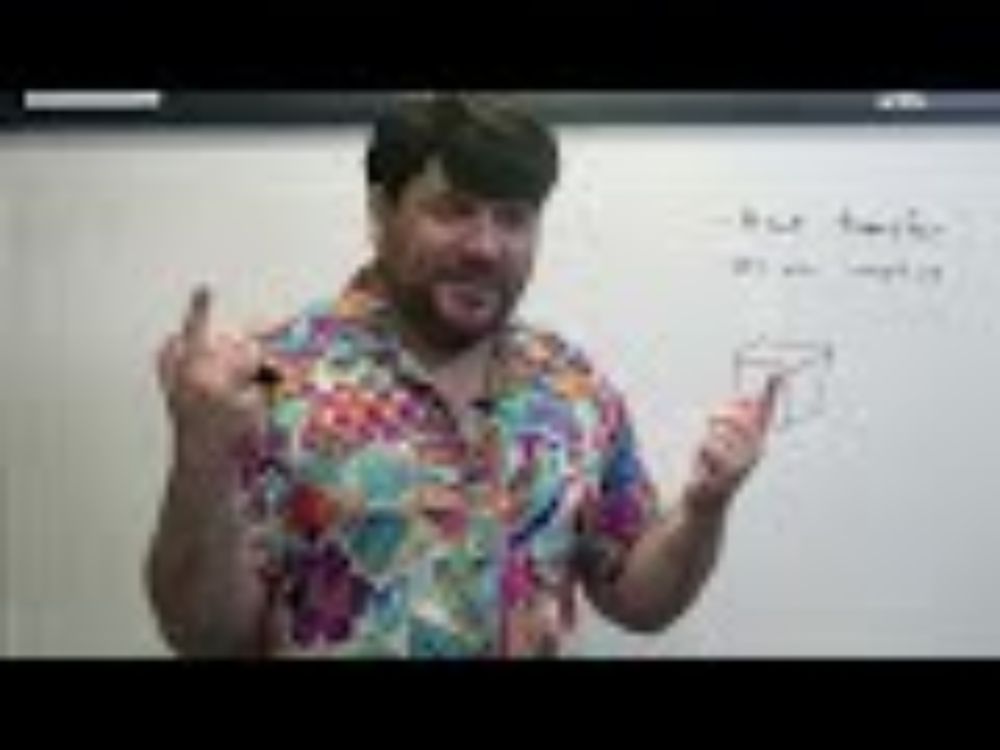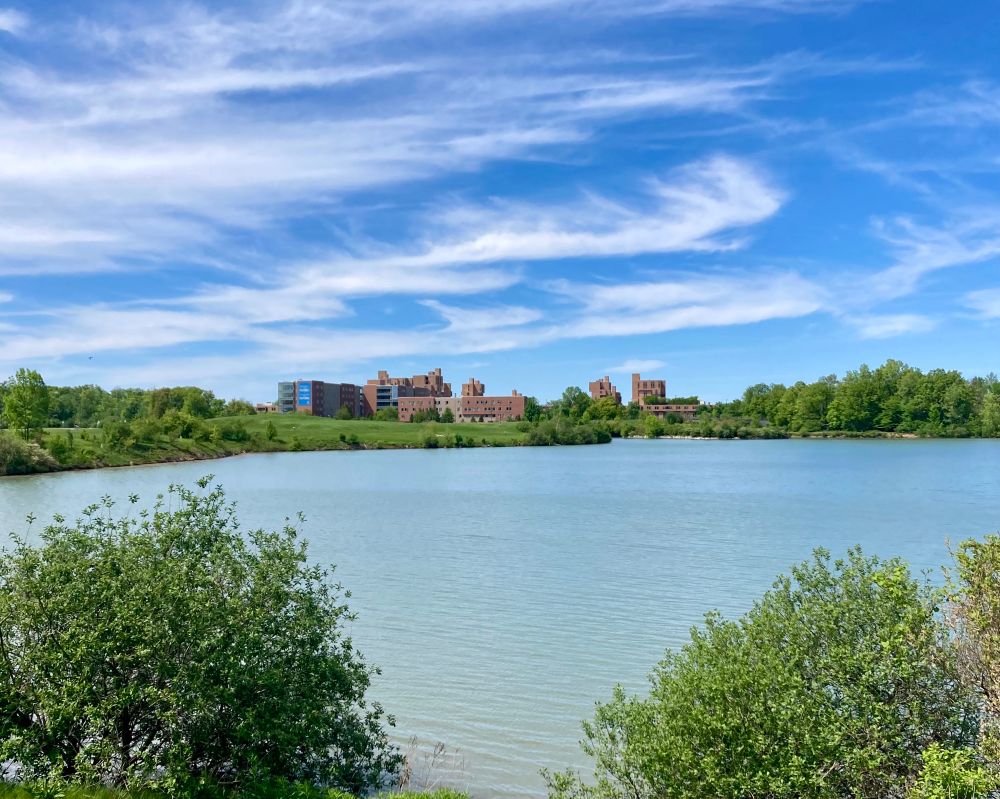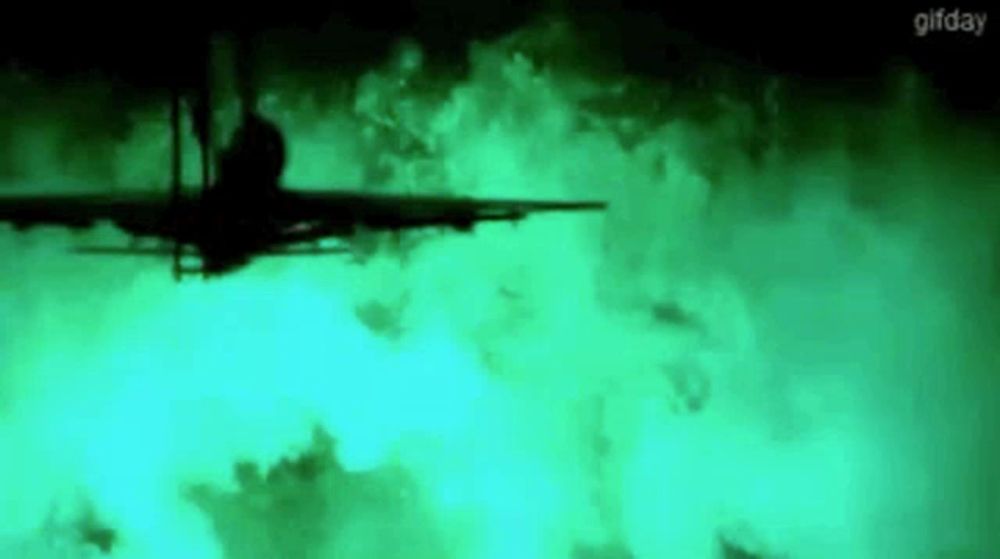Lathisms
Honored to have been featured as today’s mathematician in Lathisms’ annual calendar for Hispanic Heritage Month!
(Also delighted to see some familiar faces in this year’s cohort!)
10.10.2025 15:57 — 👍 0 🔁 0 💬 0 📌 0
I hesitate to share things publicly these days, for perhaps obvious reasons. But I suppose that the fear of evil should not drive inaction; the hope for good should drive action instead. And so I have to proverbially put my money where my mouth is.
I hope they're useful to someone out there.
07.08.2025 12:35 — 👍 0 🔁 0 💬 0 📌 0
YouTube video by Arnaldo Rodriguez-Gonzalez
Lecture 33: Thermoregulation and extreme heat events
If anything, thinking of making this lecture on thermoregulation and extreme heat events motivated me to make and post these recordings in the first place; although highly simplified, it is important knowledge for anyone invested in the global health of humanity this century.
07.08.2025 12:35 — 👍 0 🔁 0 💬 1 📌 0

Commentary on Heat Transfer - YouTube
These are a series of lectures designed for the summer undergraduate heat transfer course in the University at Buffalo's Mechanical and Aerospace Engineering...
I've uploaded my lectures for my summer heat transfer course on YouTube, free to watch.
They are largely unedited and a tad sloppy; but I made a commitment years ago to the free distribution of knowledge, and I have to see it through.
07.08.2025 12:35 — 👍 0 🔁 0 💬 1 📌 0

Commentary on Heat Transfer - YouTube
These are a series of lectures designed for the summer undergraduate heat transfer course in the University at Buffalo's Mechanical and Aerospace Engineering...
That's why radiation is not technically a transference of heat!
If you'd like to learn more about heat transfer, I've made my (currently incomplete) summer course lectures on heat transfer available for free on YouTube: check them out if you like!
www.youtube.com/playlist?lis...
21.07.2025 22:11 — 👍 1 🔁 0 💬 0 📌 0
And, key to note, no actual heat flow occurs in radiative temperature equilibration. /Electromagnetic/ energy flows between the objects, /some/ of which is converted back into thermal energy; and since the flow is affected by the objects's temperatures, this (potentially) leads to equilibrium.
21.07.2025 22:11 — 👍 0 🔁 0 💬 1 📌 0
This means that modeling radiation involves modeling three separate physical processes; the emission of electromagnetic energy, its propagation through space, and its (partial) conversion back into thermal energy upon interacting with matter.
THIS is what makes modeling radiation so hard!
21.07.2025 22:11 — 👍 0 🔁 0 💬 1 📌 0
What happens, in short, is that objects will emit /electromagnetic/ energy into their surroundings (in the form of light) as a function of their temperature. That electromagnetic energy travels through space, and upon interacting with matter, may be partially converted back into thermal energy.
21.07.2025 22:11 — 👍 0 🔁 0 💬 1 📌 0
If the temperature of something is based on the random kinetic energy of its molecules, what is the temperature of empty space? If empty space has no temperature, how can it have thermal energy, and therefore how can heat flow occur in it?
The answer; it doesn't! No heat flow occurs in radiation.
21.07.2025 22:11 — 👍 0 🔁 0 💬 1 📌 0
The field of study called "heat transfer" is then called this because most of its modeling efforts are focused on relating heat fluxes and heat transfer rates to temperature imbalances, as well as other properties of the physical system being studied.
But this idea breaks down for radiation.
21.07.2025 22:11 — 👍 0 🔁 0 💬 1 📌 0
Heat flow then occurs as a result of imbalances in temperature, like how fluids flow under pressure imbalances! A temperature imbalance in matter causes a flow of thermal energy from hot to cold that "corrects" the imbalance over time, in the absence of "thermal forcing" or anything like that.
21.07.2025 22:11 — 👍 0 🔁 0 💬 1 📌 0
For the first two modes, we hypothesize that there is a quantity—thermal energy, or heat—that is a function of the temperature of the object/point being studied, which can flow through matter and be transferred between objects.
21.07.2025 22:11 — 👍 0 🔁 0 💬 1 📌 0
However, we observe that temperature equilibration can occur even between two objects separated by empty space, with no matter between them! This is the mode we call "radiation".
So this /empirically/ describes the three modes of "heat transfer". How do we model and describe them?
21.07.2025 22:11 — 👍 0 🔁 0 💬 1 📌 0
Between solids in contact (and within them), we call the mode that induces temperature equilibration "conduction".
Between solids and fluids in contact, or between just fluids, we call that mode "convection". (There's a bit more refinement to these descriptions, but this describes most of it.)
21.07.2025 22:11 — 👍 0 🔁 0 💬 1 📌 0
What we call "modes" of heat transfer (in the field-of-study sense) are just different physical contexts in which we observe a key empirical behavior; that objects with different temperatures, in the absence of "thermal perturbations", will eventually "equilibrate" to the same temperature over time.
21.07.2025 22:11 — 👍 0 🔁 0 💬 1 📌 0
To explain why, we first need to answer what the /field of study/ we call "heat transfer" is.
In short, it's the field of study that seeks to describe how temperature changes, in time and in space, across and within objects. Notice no actual definition of what "heat" is!
21.07.2025 22:11 — 👍 0 🔁 0 💬 1 📌 0
One of my favorites parts of teaching heat transfer:
Explaining that radiation is not /technically/ a form of heat transfer! (A thread.) #physics
21.07.2025 22:11 — 👍 0 🔁 0 💬 1 📌 0
I saw this model work well for artists and writers I know; it comes with its own challenges (who owns IP/usage permissions, collective identity, interpersonal disputes, etc.) but I agree that this might be a good way forward for folks starting out.
Community always helps!
20.06.2025 18:02 — 👍 1 🔁 0 💬 0 📌 0
Anyways, this is a relatively self-centered overshare, which I’ll likely delete later (too risky to share things on social media now), but I’m not alone in feeling this way. I guess this is just my way of grieving what was, and what could’ve been. It also explains why I post so rarely now.
19.06.2025 17:14 — 👍 1 🔁 0 💬 1 📌 0
Although it seems like this’d be good on the “consumer” side—higher quality for far cheaper on written content, for example—my guess is that this’ll heavily discourage potential authors from even considering writing in the first place. We will go the same way that stonemasons did.
19.06.2025 17:14 — 👍 0 🔁 0 💬 1 📌 0
The only way to perhaps beat AI—for now—is to have enough resources to considerably improve quality (using a good, fancy publisher, for example), and to have name recognition that both set the content apart from “slop”. Not great for folks starting out, or who want to make open/free material.
19.06.2025 17:14 — 👍 0 🔁 0 💬 1 📌 0
2) I don’t think there’ll be an “economy” for free long-form human-made content in the AI age. No point debating good or bad; the fact is that even if I’d like to think I can write free books or make science lectures in my spare time better than AI, AIs will just churn out that content far faster.
19.06.2025 17:14 — 👍 0 🔁 0 💬 1 📌 0
That’s a shame for us early-career folks; I co-authored a paper on perturbation theory that came about as a collaboration via social media! That sort of incentive for public sharing was meaningful. But now it feels like sharing anything is just a risk to get your career killed by engagement-farmers.
19.06.2025 17:14 — 👍 0 🔁 0 💬 1 📌 0
There are two key reasons in my mind for this:
1) Using social media as an identifiable person feels like far more of a risk than sensible relative to rewards. You either have to be anonymous (what every big account does now) and/or already secure and fully established in your life and career.
19.06.2025 17:14 — 👍 0 🔁 0 💬 1 📌 0
It’s been interesting to reflect on how steeply my feelings on sharing things—educational and otherwise—on social media have changed over the last year.
For example; I’m making a series of lecture videos for my summer heat transfer course. The original plan was to share them freely. Now—not sure.
19.06.2025 17:14 — 👍 2 🔁 0 💬 1 📌 0

Another semester of teaching at UB concluded. Eternally grateful to have the ability to teach—it is not an easy time right now to be a professor, but it is a far harder time to be a student.
They’ve done amazing work in the face of great adversity and fear. What a privilege it is to help them.
23.05.2025 23:09 — 👍 1 🔁 0 💬 0 📌 0
More fun with computational fluid mechanics:
Here's a 2-D simulation of a layer of air (red) below a layer of water (blue) in a closed container. As air is lighter, buoyant forces cause the interface to be unstable, leading to the complex flow shown here as the air eventually rises to the top.
07.05.2025 14:10 — 👍 2 🔁 0 💬 0 📌 0
For the rotating cylinder and using water as the main phase, about one million, so pretty high! But the multiphase flow muddles things up, as the characteristic Reynolds number of the bubbles is relevant too, and I haven’t post-processed enough to get their equilibrium speed/radius out.
22.04.2025 16:27 — 👍 0 🔁 0 💬 1 📌 0
More fun with CFD for my course; here's a simulation of air bubbles being generated in a container of water with a rapidly rotating cylinder inside of it.
As time goes by, the cylinder rotation begins to affect the flow in the whole tank, and droplets start to drift to the right!
22.04.2025 14:40 — 👍 3 🔁 0 💬 1 📌 0

a plane is flying through a cloud of green smoke .
ALT: a plane is flying through a cloud of green smoke .
These wingtip vortices are a ubiquitous phenomenon in aircraft! And as expected, accounting for these vortices is an important part of designing aerodynamic systems.
Anyways, that's all I can think of posting. Hope you enjoyed it!
17.04.2025 21:07 — 👍 0 🔁 0 💬 0 📌 0
Makers of #MATLAB & #Simulink. Accelerating the pace of discovery, innovation, and development in engineering and science.
mathworks.com
Mathematician. John J. & Ann Curley Chair in Liberal Arts at Dickinson College. Author of Tales of Impossibility and Euler's Gem. Coffee drinker. [Everything in the timeline before October 2024 was imported from my Twitter/X feed 2008-24.]
I’m here to discuss Mathematics, Research Software Engineering, Machine Learning and #HPC.
I was @walkingrandomly on twitter
Now a Community Developer Advocate at MathWorks.
Author of The MATLAB Blog.
The latest news in Physics, Computer Science, Engineering, Astronomy and Astrophysics from @cambridgeup.bsky.social
Statistical mechanic, secular Bayesian.
Prof. of Complex Systems and Network Science @ IT:U, Austria
Head of the “Inverse Complexity Lab”.
@invcomplexity.skewed.de
https://skewed.de/lab
Mathematician at the University of Florida. Here for the hot takes. Also @VinceVatter@mathstodon.xyz
Scientist: PhD in mathematics. Working in hyperbolic geometry, analysis in metric spaces and mathematical physics (gravitational waves and general relativity), broad range of other scientific interests.
Here mostly to connect with researchers.
he/him
Director of The Research School of Physics at the Australian National University | Prof @PhysicsANU | High Pressure Science & Diamonds | AIP President 2019-20 | Dog lover | Enjoys new tech | opinions my own
Professor of Mechanical Engineering and interested in contact mechanics, hydrodynamic lubrication, electrical contacts. Editor of the ASME Journal of Tribology. In 2012, Prof. Jackson also initiated an undergraduate minor in Tribology.
Husband, Dad×2, Footballer (soccer), Fietser, Runner.
Dynamical Systems, Nonlinear Dynamics, Chaos, Numerics, Asymptotics, Fluids, Table-top Experiments, Math Bio, Pedagogy.
https://amath.uw.edu/people/amin-rahman
https://pilotwaves.github.io
25, I study physics in Münster. #BlackLivesMatter (he/him)
Neuronas, redes y auto-organización.
Complex systems and computational neuroscience at the Basque Center for Applied Mathematics
Physicist. Assistant Professor at UFV/Brazil.
Complex Systems Scientist | Network Science | Epidemic modeling
Website: https://wcota.me
Professing computing and applied math at Cornell. Numerical methods for data science, plasma physics, other stuff depending on the day. Director, Cornell Center for Applied Mathematics; Director, Simons Collaboration on Hidden Symmetries and Fusion Energy.
Assistant Professor of Applied mathematics and Fluid dynamics, Paris, France.
Theoretical physicist http://ChaosBook.org
Please list your online seminars on https://researchseminars.org
Freelance illustrator. Commissions open; email for info • silverthegold@gmail.com • she/he/they
Prints: https://www.inprnt.com/gallery/vetyr/
Technologist | Erstwhile computational physicist | Projects at TrueSciPhi.org: Explorations in computational philosophy via AI dialogues • Curated science & philosophy podcast collections
Them: You're the father of the xbox!
Me: If it moves back in, it’s paying rent.
theoretical physics | CEO | gastroegyptology | cacao | CHM trustee
Physics Prof @ U of MS. Sloan Fellow. Black holes, gravitational waves, general relativity & beyond. Formerly Caltech MIT Cornell. Need thin pizza + fruity coffee. He/him
🌐 https://duetosymmetry.com/
@duetosymmetry everywhere






